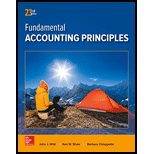
(1)
Ratio Analysis:
• Ratio analysis is a study of several key metrics of a company based on the data presented in its’ financial statements with an objective to evaluate the financial health of a company.
• It is essential for investors, stakeholders, government bodies etc. to evaluate the key metrics of an entity in order to ensure that the company fulfills the going concern principle and displays financial stability.
The key metrics mentioned above include the following:
• Cost of Goods sold to Total Expenses – It is a measure of the relation between the cost of goods sold in relation to the total expenses of the reporting period which include both direct and indirect costs of manufacture.
• It seeks to measure the relation of the selling and distribution expenses in relation to the total costs and a high ratio can indicate that the company is not spending enough on the Selling and Distribution expenses and vice versa.
Cost of Goods Sold to Total Expenses = Cost of Goods Sold / Total Expenses × 100
where,
Total expenses = Sum total of Direct and Indirect Expenses
Cost of Goods sold to Total Expenses for Samsung for the recent 2 years.
(2)
Ratio Analysis:
• Ratio analysis is a study of several key metrics of a company based on the data presented in its’ financial statements with an objective to evaluate the financial health of a company.
• It is essential for investors, stakeholders, government bodies etc. to evaluate the key metrics of an entity in order to ensure that the company fulfills the going concern principle and displays financial stability.
The key metrics mentioned above include the following:
• Cost of Goods sold to Total Expenses – It is a measure of the relation between the cost of goods sold in relation to the total expenses of the reporting period which include both direct and indirect costs of manufacture.
• It seeks to measure the relation of the selling and distribution expenses in relation to the total costs and a high ratio can indicate that the company is not spending enough on the Selling and Distribution expenses and vice versa.
Cost of Goods Sold to Total Expenses = Cost of Goods Sold / Total Expenses × 100
where,
Cost of Goods Sold to Total Expenses = Cost of Goods Sold / Total Expenses × 100
where,
Total expenses = Sum total of Direct and Indirect Expenses
Want to see the full answer?
Check out a sample textbook solution
Chapter 20 Solutions
Fundamental Accounting Principles

 AccountingAccountingISBN:9781337272094Author:WARREN, Carl S., Reeve, James M., Duchac, Jonathan E.Publisher:Cengage Learning,
AccountingAccountingISBN:9781337272094Author:WARREN, Carl S., Reeve, James M., Duchac, Jonathan E.Publisher:Cengage Learning, Accounting Information SystemsAccountingISBN:9781337619202Author:Hall, James A.Publisher:Cengage Learning,
Accounting Information SystemsAccountingISBN:9781337619202Author:Hall, James A.Publisher:Cengage Learning, Horngren's Cost Accounting: A Managerial Emphasis...AccountingISBN:9780134475585Author:Srikant M. Datar, Madhav V. RajanPublisher:PEARSON
Horngren's Cost Accounting: A Managerial Emphasis...AccountingISBN:9780134475585Author:Srikant M. Datar, Madhav V. RajanPublisher:PEARSON Intermediate AccountingAccountingISBN:9781259722660Author:J. David Spiceland, Mark W. Nelson, Wayne M ThomasPublisher:McGraw-Hill Education
Intermediate AccountingAccountingISBN:9781259722660Author:J. David Spiceland, Mark W. Nelson, Wayne M ThomasPublisher:McGraw-Hill Education Financial and Managerial AccountingAccountingISBN:9781259726705Author:John J Wild, Ken W. Shaw, Barbara Chiappetta Fundamental Accounting PrinciplesPublisher:McGraw-Hill Education
Financial and Managerial AccountingAccountingISBN:9781259726705Author:John J Wild, Ken W. Shaw, Barbara Chiappetta Fundamental Accounting PrinciplesPublisher:McGraw-Hill Education





